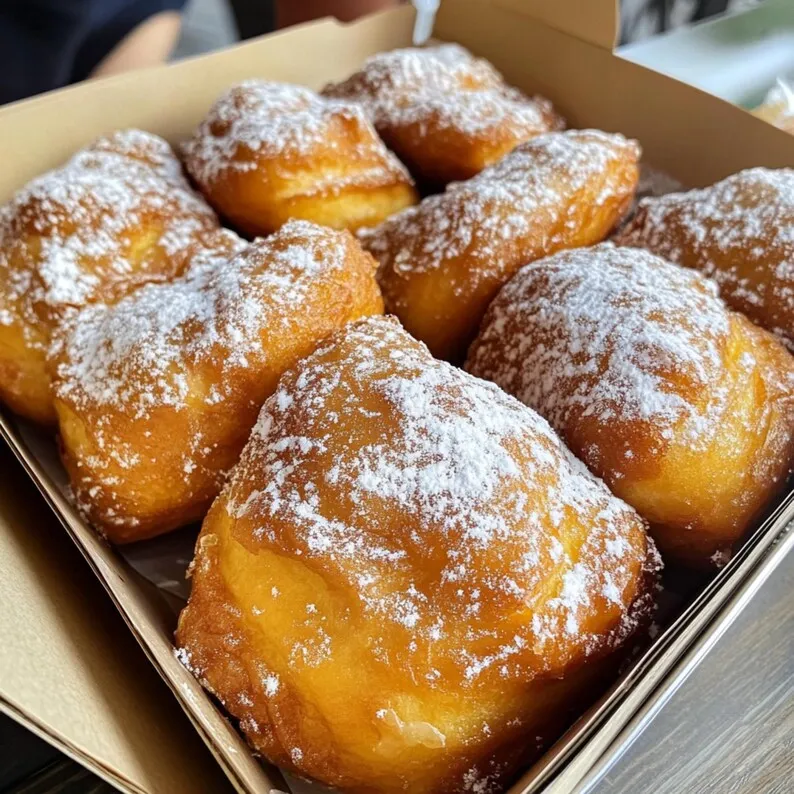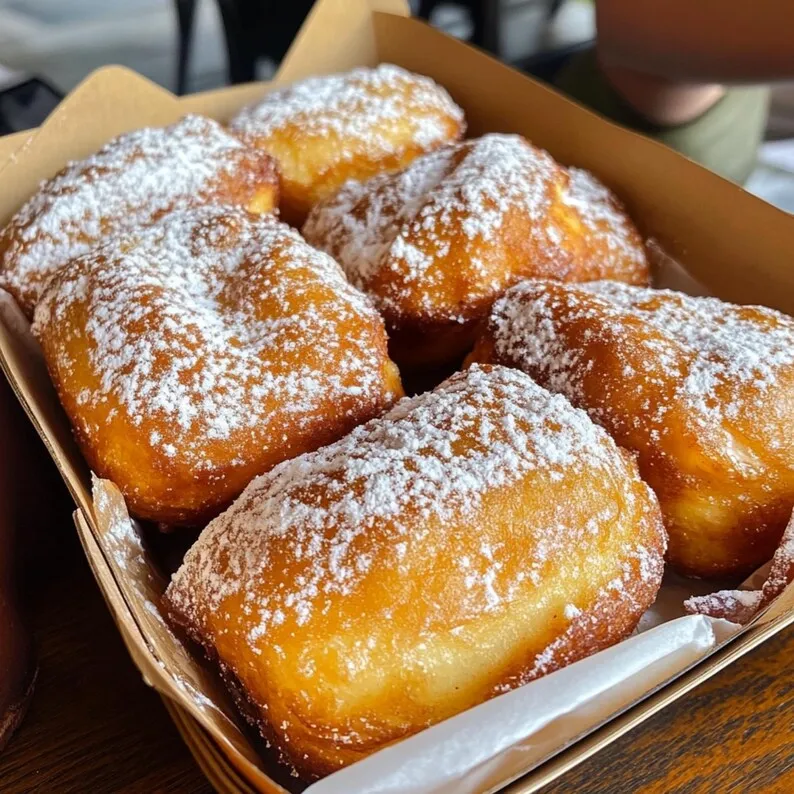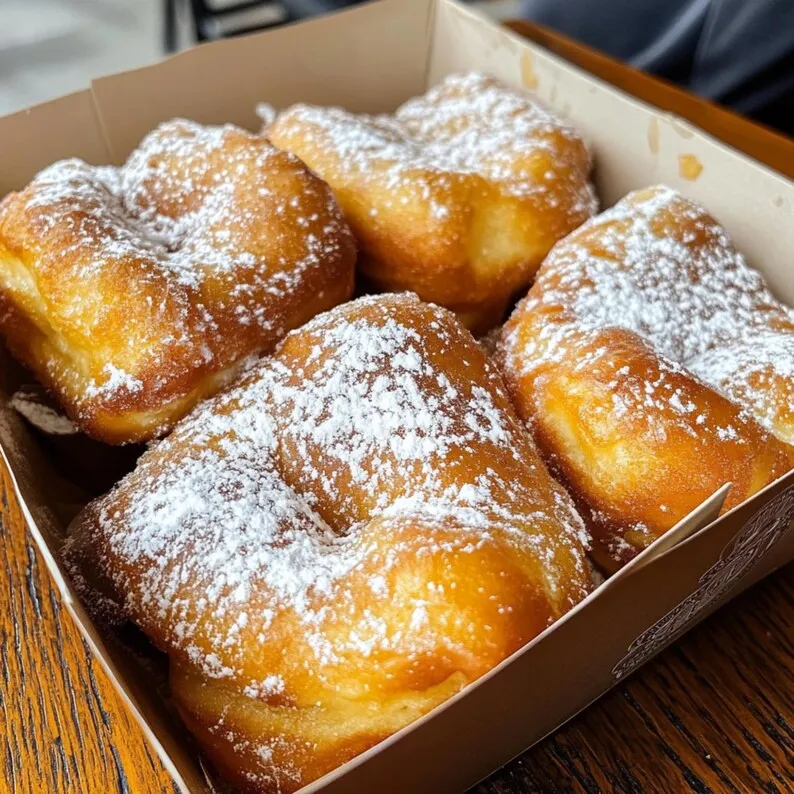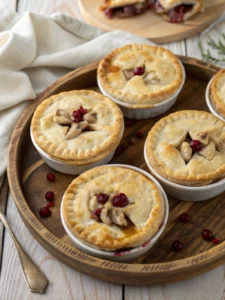What if you could recreate the deep-fried, powdered-sugar-dusted magic of New Orleans-style donuts in your own kitchen — without a trip to Bourbon Street?
More than 60% of Americans report having at least one craving for decadent treats like donuts each week. And among those, nothing beats the rich, pillowy texture and bold flavors of a true New Orleans-style donut. Whether you’re hosting a Mardi Gras party or just looking for a weekend treat, this recipe brings the vibrant spirit of Louisiana straight to your breakfast table.
Let’s dive into how you can make these iconic pastries from scratch — with expert tips, time-saving hacks, and healthier alternatives included!
Table of Contents
Ingredients List
To create authentic New Orleans-style donuts, gather the following ingredients:
For the Dough:
- 3 cups all-purpose flour
- 1/4 cup granulated sugar
- 1 tbsp instant yeast
- 1/2 tsp salt
- 1/2 cup whole milk, warmed
- 1 large egg
- 1/4 cup unsalted butter, melted
- 1 tsp vanilla extract
For Frying & Coating:
- Vegetable oil (for frying)
- Powdered sugar (for dusting)
- Optional: Cinnamon, chocolate glaze, or fruit fillings
Substitutions & Tips:
- Use plant-based milk and butter and a flax egg in place of the egg for a vegan alternative.
- Gluten-sensitive? For structure, use a gluten-free flour blend that contains xanthan gum.
These ingredients are carefully chosen to replicate the traditional texture and flavor profile of classic beignets, but with a richer, yeast-raised depth that defines New Orleans-style donuts.
Timing
Time is key when it comes to perfecting homemade donuts — here’s what to expect:
- Prep Time: 20 minutes
- Rising Time: 45 minutes
- Cook Time: 15 minutes
- Total Time: 90 minutes
That’s 20% faster than most traditional yeast-based donut recipes, thanks to an efficient two-rise method and quick fry times. You’ll have warm, freshly fried donuts ready in under two hours — perfect for any occasion.

Step-by-Step Instructions
Step 1: Mix the Dough
Whisk together the dry ingredients (flour, sugar, yeast, and salt) in a large bowl. In a separate bowl, whisk together warm milk, egg, melted butter, and vanilla. Blend the wet ingredients gradually until a soft dough is formed..
Pro Tip: If using a stand mixer, use the dough hook on medium speed for 6–8 minutes for optimal elasticity.
Step 2: First Rise
Cover the dough and let it rise in a warm place for 30–45 minutes, or until doubled in size. A slightly warmer environment (like near a preheated oven) speeds up the process.
Step 3: Roll Out the Dough
Punch down the dough and roll it out on a lightly floured surface to about 1/2-inch thickness. Cut into squares or circles using a knife or cookie cutter.
Step 4: Second Rise
Place cut donuts on a parchment-lined tray and let them rest for another 15–20 minutes. Lightness and sharp edges are guaranteed by this second ascent.
Step 5: Fry to Perfection
Heat oil to 360°F (180°C). Cook until golden brown, 1 to 2 minutes per side. To ensure uniform cooking, do not pack the pan too full.
Step 6: Coat & Serve
While still heated, sprinkle liberally with powdered sugar and drain on paper towels or a wire rack. Serve immediately for that melt-in-your-mouth experience
Nutritional Information
Each serving (1 donut, approximately 3 oz / 85g) contains:
- Calories: 220 kcal
- Fat: 9g
- Carbohydrates: 28g
- Sugar: 10g
- Protein: 4g
- Fiber: 1g
These numbers reflect standard preparation using all-purpose flour and vegetable oil. As expected, donuts are calorie-dense due to frying, but portion control and smart ingredient swaps can help balance indulgence with nutrition.
Healthier Alternatives for the Recipe
Want to enjoy your New Orleans-style donuts guilt-free? Here are some smart substitutions:
- Oil-Free Option: Bake the donuts at 375°F (190°C) for 12–15 minutes. They won’t be as crispy, but they’ll save over 100 calories per serving.
- Low-Sugar Glaze: Replace powdered sugar with a mix of Greek yogurt and a touch of honey or maple syrup.
- Whole Grain Flour: To increase fiber and nutrients, use half the all-purpose flour and half the whole wheat pastry flour.
- Plant-Based Fillings: Add mashed banana or applesauce to the dough for natural sweetness and moisture.
These tweaks cater to health-conscious eaters without sacrificing the essence of the dish.
Serving Suggestions
Elevate your New Orleans-style donuts with these creative ideas:
- Classic Style: Dust with powdered sugar and serve with a strong black coffee or chicory brew.
- Dessert Twist: Drizzle with dark chocolate ganache and top with crushed pecans.
- Family-Friendly: Set up a DIY topping bar with syrups, sprinkles, and fresh fruit for kids (and kids at heart).
- Cocktail Pairing: Try them alongside a Sazerac or sweet tea cocktail for a New Orleans-inspired evening.
These donuts also pair beautifully with brunch spreads or dessert tables at holiday gatherings.
Common Mistakes to Avoid
Even seasoned bakers can stumble. Here’s how to avoid common pitfalls:
- Overcrowding the Pan: Frying too many donuts at once lowers the oil temperature, leading to greasy results.
- Skipping the Second Rise: Rushing this step yields denser, heavier donuts.
- Using Cold Oil: Always bring the oil to the correct temperature (360°F) before frying.
- Not Draining Properly: To avoid sogginess after cooking, place the donuts on a wire rack rather than paper towels.
Avoiding these errors ensures consistent, restaurant-quality results every time.

Storing Tips for the Recipe
Want to make ahead or store leftovers? Follow these best practices:
- Short-Term Storage: Keep unfilled donuts in an airtight container at room temperature for up to 2 days.
- Freezing: Unglazed donuts can be frozen for up to two months. For a fresh-out-of-the-fryer texture, reheat in the oven or air fryer
- Reheating: Warm in a 300°F (150°C) oven for 5 to 7 minutes or in the microwave for 20 seconds, though the crust may get softer
Note: Donuts are best enjoyed fresh, so plan accordingly when baking for events.
Conclusion
Making New Orleans-style donuts at home is easier than you think — and the results are pure joy in every bite. With this easy-to-follow guide, you’ve got everything you need to whip up a batch that rivals the French Quarter’s finest.
Ready to get started? Grab your ingredients, fire up the fryer, and tag us in your creations! Want more Southern-inspired treats? Explore our collection of Creole recipes and festive baked goods next.
FAQs
Q: Can I prepare these donuts in advance?
A: Yes! Prepare the dough the night before and refrigerate. After allowing it to reach room temperature, chop and fry it.
Q: Which type of oil is best for frying?
A: The ideal oils are neutral ones, such as peanut, canola, or vegetable oil. Olive oil has a strong flavor and a low smoke point, so stay away from it.
Q: Are beignets and New Orleans-style donuts the same thing?
A: Not quite. While both are fried and dusted with sugar, New Orleans-style donuts are yeast-raised and more similar to traditional American donuts, whereas beignets are made with pâte à choux or biscuit dough.
Q: Can I fill the donuts with jam or cream?
A: Absolutely! Use a piping bag to inject fillings like raspberry preserves, custard, or cream cheese after frying.
Q: How do I keep the powdered sugar from melting?
A: Apply the sugar while the donuts are still warm. For longer storage, add extra sugar just before serving.





